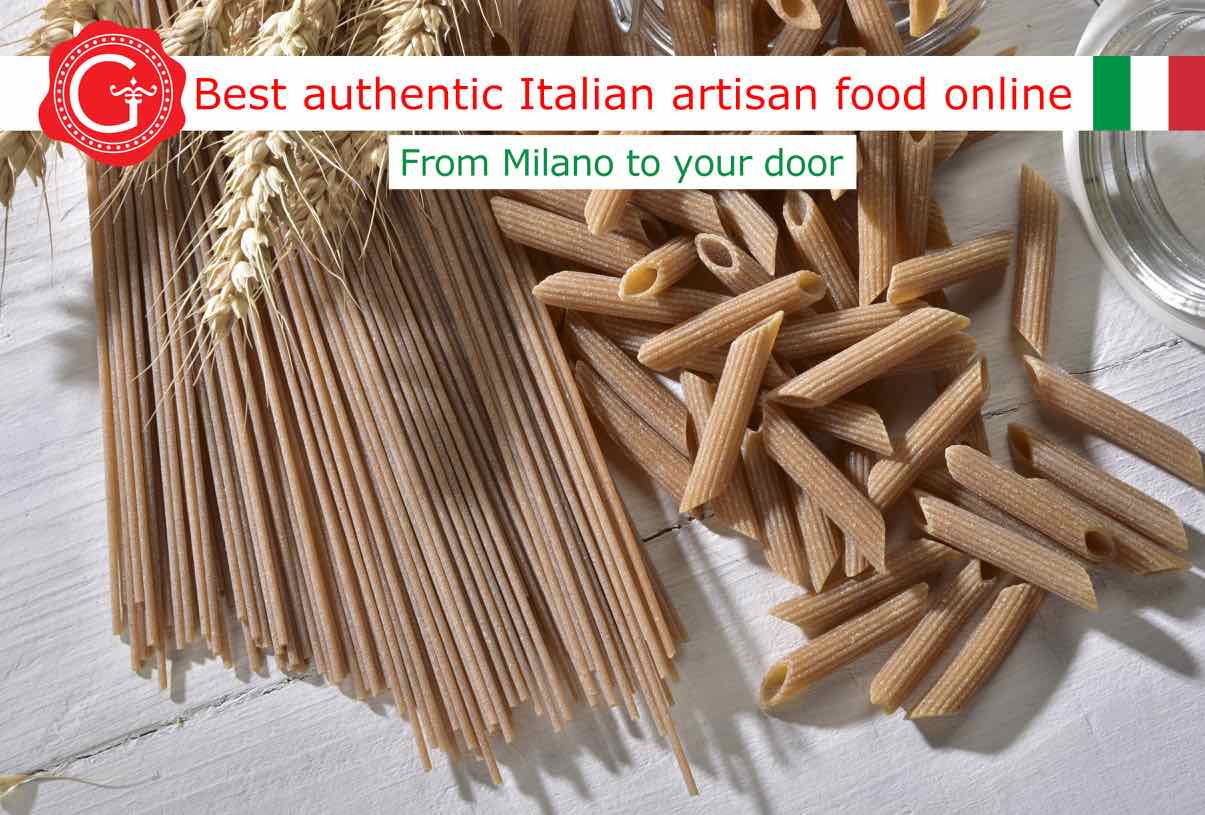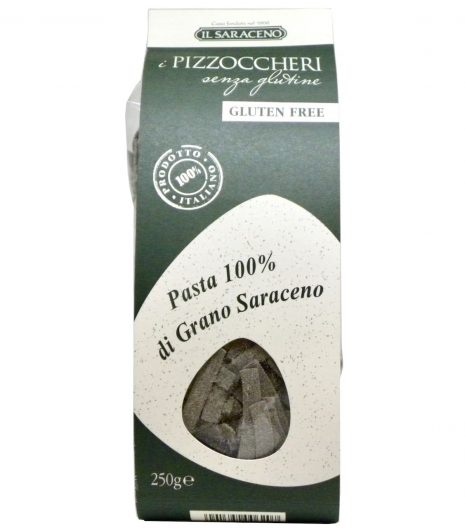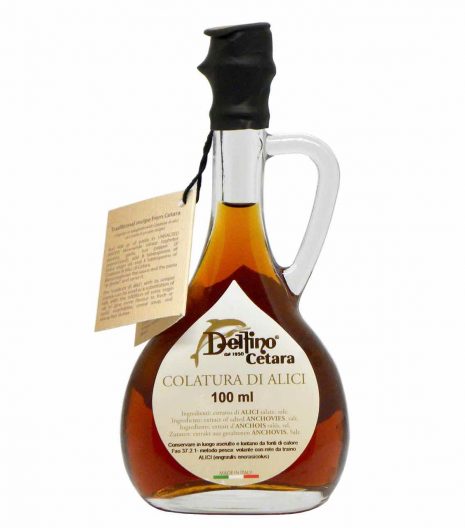Whole wheat pasta is a food with different aspects that deserve some attention. The interesting aspects concern not only the nutritional values, the possible benefits for health or the flavors that best pair, but also the regulatory framework that defines the durum wheat integral semolina pasta.
In the course of the article we will focus on the calories and nutrients of whole wheat pasta, on the glycemic index and on the glycemic load, on the benefits and contraindications.
The themes, as we shall see, are articulated and intertwined. Enjoy the reading!
WHOLE WHEAT PASTA CALORIES
Let’s start by considering the calories of whole wheat pasta: 100 grams of wholemeal pasta provide about 350 – 360 kcal.
Pasta, while cooking, absorbs water. The amount of water absorbed during cooking varies depending on the type of pasta (for example different pasta shapes or different kinds of semolina absorb different amounts of water). Indicatively, we can say that the weight of short pasta doubles with cooking, while the weight of long pasta becomes more than double (about 2.4 times).
Our 100 grams of dry wholemeal pasta thus become, once cooked, about 240 grams.
Since water does not supply calories, the calories of whole wheat pasta we have in the dish do not increase.
Whole wheat pasta vs white pasta calories
Compared to white pasta, wholemeal pasta contains fewer calories, but the difference is not much. Here are the values:
Whole wheat pasta calories per 100 grams: 350 – 360 kcal
“Regular" (i.e. not whole durum wheat) pasta calories per 100 grams: 370 –380 kcal
SHOP ONLINE WHOLEMEAL PASTA AND OTHER HIGH-QUALITY ARTISAN ITALIAN FOODS ON GUSTOROTONDO
On Gustorotondo you find wholemeal pasta and the best artisan Italian foods.
We look for producers who have high-quality standards, and we offer artisan Italian good products that enhance the tradition and authentic flavours of Italian cuisine.
Gustorotondo was born as a traditional Italian food store in the center of Milan, and then started the e-commerce business. Now you can buy traditional Italian food online on Gustorotondo from all over Italy, from England, from Germany, from the Netherlands, from the Czech Republic, and from all the other European countries.
Shop online the best authentic artisan Italian food at Gustorotondo!
WHOLE WHEAT PASTA NUTRIENTS
Let’s look at the nutrients of wholemeal pasta. We have chosen to consider the nutritional values of pasta after cooking, as it is what we eat.
The indicated values refer indicatively to 240 g of cooked pasta, which correspond to about 100 g of long pasta before cooking. In brackets we report the values for the so-called regular pasta (obtained with refined semolina) cooked.
Whole wheat pasta nutrients: general values for macronutrients and water
Let’s start by considering water, proteins, lipids and carbohydrates of whole durum wheat pasta, highlighting also sugars and dietary fiber. In brackets you find the values for regular pasta. Here they are:
- Water: 148 g (149 g)
- Proteins: 14.38 g (13.92 g)
- Lipids: 4.1 (2.23, g)
- Carbohydrates (by difference): 72.17 g (74.06 g)
- Dietary fiber: 9.4 g (4.3 g)
- Sugars: 1.8 g (1.34 g)
As you can see, the quantity of carbohydrates in wholemeal pasta is close to that of white pasta.
Whole wheat pasta contains a greater quantity of proteins, lipids, dietary fiber and sugars. Although some of the nutritional values of wholemeal pasta are considerably higher than those of refined wheat pasta, considering the daily requirements the differences appear to be rather limited. The most important difference, in this first analysis, appears to be that relating to dietary fiber.

Whole wheat pasta and protein daily intake
Regarding the daily requirement in terms of proteins, following in principle some indication of EFSA you should take about 0.8 g per kg of your body weight.
Let’s consider our wholemeal pasta dish: it contains about 14 grams of protein.
If we consider a person who weighs 70 kg, his requirement will be around 0.8 x 70 = 56 g of protein. The whole wheat pasta dish, with its 14 grams of protein, provides about 25% of the proteins needed for one day.
Whole wheat pasta and carbohydrates daily intake
Regarding the daily requirement in terms of carbohydrates, always following in principle some indications of EFSA, an adult should take carbohydrates in such quantity as to provide between 45% and 60% of the calories taken during the day.
On average, 1 g of carbohydrates provides our body with 4 kcal, and the carbohydrates of our whole wheat pasta dish are around 72 g. They therefore provide about 72×4 = 288 kcal.
Now, assuming again a daily requirement of 2500 kcal, 45% is equal to 1125 kcal, and 60% to 1500 kcal. The 288 kcal provided by the wholemeal pasta carbohydrates are between 19% and 26% of the total we need during the day.
Whole wheat pasta and lipids daily intake
Regarding the daily requirement in terms of lipids, always following in principle some indications of EFSA, an adult should take them in such quantity as to supply between 20% and 35% of the total calories taken during the day.
The lipids of 240 g of cooked whole wheat pasta (comprising therefore almost 150 grams of water) are about 4.1 grams. Given that one gram of lipids provides about 9 kcal to our body, 4.1 g of lipids supply about 37 calories. The lipids of our wholemeal durum wheat semolina pasta dish, providing about 37 kcal, contribute little to the satisfaction of the daily requirement.
EFSA also provides indications regarding fatty acids, which are components of lipids. Let’s see something about fatty acids in our wholemeal pasta dish in the next section.
Whole wheat pasta and fatty acids daily intake
The lipids we eat are almost always triglycerides, and triglycerides are composed of a molecule of glycerol and three fatty acids.
As for fatty acids, the contents of 240 grams of wholemeal pasta (equivalent to about 100 grams of pasta before cooking) are the following:
- Saturated fatty acids: 0.583 g (0.422 g)
- Monounsaturated fatty acids: 0.422 g (0.314 g)
- Polyunsaturated fatty acids: 1.378 g (0.782 g), including:
- Linoleic acid (or 18: 2 n-6): 1.291 g (white pasta: data not available)
- α-linoleic acid (or 18: 3 n-3, or ALA): 0.086 g (0.058 g)
EFSA recommends consuming as few saturated fatty acids as possible. In addition, it is recommended to consume:
- Linoleic acid in quantities such as to constitute 4% of the total daily calories
- α-linoleic acid in quantities sufficient to constitute 0.5% of the total daily calories
- 250 mg of EPA + DHA
Multiplying the grams of linoleic acid by 9 we obtain the calories that derive from it: 1.291×9 = 11.6 kcal
Now, assuming again a requirement of 2,500 kcal per day, 4% is equal to 100 kcal. The wholemeal pasta dish contributes 11.6% to the daily requirement.
If we then multiply by 9 the grams of α-linoleic acid, we get the calories that come from it: 0.086×9 = 0.77 kcal
Assuming a requirement of 2,500 kcal per day, 0.5% is equal to 12.5 kcal. The wholemeal pasta dish contributes about 6% to the daily requirement.
Minerals in whole wheat pasta

Let’s now take a look at the minerals in our 240 g wholemeal pasta dish, corresponding to about 100 g of pasta before cooking. Here are the values:
- Calcium: 31 mg (17 mg)
- Iron: 4.13 mg (1.2 mg)
- Magnesium: 130 mg (43 mg)
- Phosphorus: 305 mg (139 mg)
- Potassium: 230 mg (106 mg)
- Sodium: 10 mg (2 mg)
- Zinc: 3.22 mg (1.22 mg)
Whole durum wheat semolina pasta is interesting for:
- Magnesium: the recommended daily intake value is 250-350 mg for adults and the elderly and 450 mg for pregnant and lactating women
- Phosphorus: the daily phosphorus requirement for an adult is about 800 mg; for the elderly it is around 1000 mg, and 1200 mg for adolescents and pregnant or lactating women
- Iron: the recommended daily intake value is 10 mg for male adults and elderly, and 18 mg for women during the fertile age
- Zinc: the recommended daily intake is 15 mg for women and the elderly, 18 mg for adult men and women during pregnancy and lactation
The amount of calcium present in whole wheat pasta is rather low (the daily requirement for an adult is about 800 mg). The same is true for the amount of potassium (the daily requirement for an adult is about 3 grams; for pregnant women 5 grams, while 800 milligrams are sufficient for children under three years).
The amount of sodium present in both wholemeal and “regular”, white pasta is minimal, and does not significantly affect the recommended daily dose, which does not exceed 4-6 grams.
Vitamins in whole wheat pasta
As far as vitamins are concerned, whole grain pasta is interesting for the intake of B vitamins (B1, B2, B3, B6, B9) and vitamin E.
In particular, whole grain pasta contains a high quantity of vitamin B3 (Niacin), considering that the daily requirement is about 6.6 mg per 1000 kcal.
Here are the contents of vitamins of 100 grams of cooked wholemeal pasta (about 240 grams of pasta in the dish):
- Vitamin C: absent (absent)
- Thiamine (vitamin B1): 0.374 mg (0.048 mg)
- Riboflavin (or vitamin B2): 0.238 mg (0.0.48 mg)
- Niacin (also called vitamin PP, Pellagra Preventing, or vitamin B3): 7.502 mg (0.96mg)
- Vitamin B6: 0.223 mg (0.118 mg)
- Folic acid (vitamin B9): 50 µg (17 µg)
- Vitamin B12: absent (absent)
- Vitamin A (equivalent retinol activity): absent (absent)
- Vitamin A, International Units: 10 (0)
- Vitamin E (alpha tocopherol): 0.55 µg (0.14 µg)
- Vitamin D (D2 + D3): absent (absent)
- Vitamin K: 1.4 µg (0 µg)
THE GLYCEMIC INDEX OF WHOLE WHEAT PASTA
The glycemic index of whole wheat pasta is indicatively between 40 and 53, and is normally considered medium.
But what is the glycemic index?
The Glycemic Index (GI) of a food is an indicator of the speed with which the glycaemia (that is the amount of glucose in the blood) increases following the consumption of that food in such quantity as to contain 50 grams of carbohydrates. The rate of increase in blood glucose is expressed as a percentage by comparing the rate of increase in blood glucose that is obtained by taking the food under examination and the rate of increase in blood glucose that is obtained by taking 50 g of glucose or white bread. To convert the glycemic index from referred to glucose to white bread, multiply by 1.38.
The relevance of the GI is the subject of disputes within the scientific community.

Glycemic index of whole wheat pasta: what does it depend on?
The glycemic index of whole durum wheat semolina pasta has different values also depending on the cooking. Cooking al dente retains more of the starch inside the protein network than longer cooking, and in this way the digestion of pasta carbohydrates takes place more slowly.
Furthermore, the presence or absence of condiments containing other nutrients modifies the glycemic index of the pasta dish: the glycemic index is lowered in the presence of fats, proteins or fibers. Eating pasta along with condiments that contain fat, protein or fiber, or together with other foods such as beans, lowers the glycemic index.
Glycemic index and glycemic load
The glycemic index refers to a quantity of food that contains 50 grams of carbohydrates. However, also the amount of carbohydrates consumed is relevant for the glycemic response. The glycemic load (GL) holds against both: in fact, it is calculated by multiplying the amount of carbohydrates in the portion of the food consumed by the glycemic index of that food, and dividing the result by 100:
Glycemic load = (quantity of carbohydrates present x glycemic index) / 100
In the case of our whole wheat pasta dish, the 240 g of pasta contain about 72 g of carbohydrates. Assuming a glycemic index of 40, the calculation will therefore be:
glycemic load = (72 x 40) / 100 = 28.8
WHOLE WHEAT PASTA VS WHITE PASTA
Which is better: whole wheat pasta or regular pasta? Does whole wheat pasta have contraindications?
As we have seen, whole wheat pasta has some points in favor compared to the so-called regular pasta (i.e. refined wheat pasta). The benefits of wholemeal pasta derive from the greater presence of fiber and nutrients.
On the other hand, the bran present in the whole durum wheat semolina pasta contains tannins and resorcinol, which inhibit digestive enzymes.
Furthermore, the bran contains phytic acid, which interferes with the absorption of bivalent cations such as calcium, iron and magnesium. However, phytic acid is interesting for its antioxidant power.
In short, the question is articulated.
There is the also question of the insecticides used for the conservation of the grain, which are deposited on the external integuments of the grain.
So, ultimately, is whole wheat pasta better than white pasta?
The best thing is perhaps to alternate the consumption of whole grain pasta and white pasta.
WHOLE WHEAT PASTA RECIPES
Whole wheat pasta is tasty, with an intense note of wheat. Not everyone likes it, at least at the beginning. However, discovering and appreciating its flavor can contribute to a varied diet.
An interesting point is that some durum wheat nutrients are complementary to other nutrients which are found in legumes. In particular, lysine is a limiting amino acid of whole wheat, and legumes, with their abundant lysine content, are complementary. For this reason the classic pasta and beans dish is a tasty recipe with high biological value. A bit of Parmesan, whose lysine content is high, is welcome.
Many other recipes can then be made with whole durum wheat semolina pasta. For example:
- Whole wheat pasta with tuna and cherry tomatoes
- Cold wholemeal pasta salad
- Whole wheat pasta with cheeses
WHOLE WHEAT PASTA: THE REGULATORY FRAMEWORK
What is wholemeal pasta according to legislation? Can it be produced only in one way? What does the law say? Let’s see.
The denomination of wholemeal durum wheat semolina pasta according to DPR 187 - 2001
In Italy, wholemeal durum wheat semolina pasta is regulated by the Presidential Decree n° 187, dated 9 February 2001.
The Chapter II, Article 6, paragraph 2 states that “wholemeal durum wheat semolina pasta” is the name to be used for the product obtained by drawing, rolling, and drying a dough prepared exclusively with durum wheat wholemeal semolina and water.
The only ingredients, therefore, are wholemeal durum wheat semolina and water.
And what is wholegrain durum wheat semolina? The same decree states that “Durum wheat wholemeal semolina” or simply “wholemeal semolina” is the name to be used for the granular product directly obtained by grinding durum wheat which has had any impurities and extraneous bodies removed.
According to what the decree states, therefore, whole wheat pasta is made using only two ingredients:
- water;
- durum wheat, freed from extraneous bodies and impurities, ground.
The question at this point is: does the law intend to state that only extraneous bodies and impurities can be eliminated, and that all parts of the durum wheat grain must be kept? Or can you also remove other parts? Let’s try to understand.
The characteristics of wholemeal durum wheat semolina pasta according to DPR 187 of 2001

The same decree reports the characteristics that wholemeal pasta must have to be marketed.
As can be seen from the table, the maximum amount of ash allowed in wholemeal pasta is twice that allowed for white pasta. The ashes are what remains after the total combustion of the product, and are composed of minerals and their oxides. Now, minerals are mainly contained in the coatings of the endosperm of seeds (part of what is commonly referred to as bran): for this reason the ashes are an indicator of the degree of refining.
Now, according to some, the law presents an incongruity. because if you use all the bran (and the law means to use it all?), then it may be that you exceed the maximum value of ashes allowed by the same law.
The production of wholemeal semolina pasta according to Presidential Decree 187 of 2001
Furthermore, Decree 187 states that in the production of pasta, special pasta and egg pasta, re-use within the same production plant of the product or parts of it resulting from the production or packaging process is allowed.
In this regard, some point out that a semolina (and therefore a pasta) obtained by grinding the whole grain does not have the same nutritional characteristics of a flour obtained by adding parts of the bran (which contain what remains as ash) to a refined semolina.
The Presidential Decree 5 March 2013 n. 41 and a law proposal
The Presidential Decree 5 March 2013 does not determine better the critical points we have seen.
However, there is a bill which proposes to operate some distinctions, including that between “whole durum wheat semolina" and “whole wheat semolina without durum wheat germ".
SOME REFERENCES AND BIBLIOGRAPHY
- Angelo Sicigna, Effects of raw material, technological process and cooking procedure on quality of pasta from durum wheat semolina. Tesi sperimentale per il conseguimento del titolo di Dottore di ricerca in Scienze e Tecnologie delle Produzioni Agro-Alimentari, UNIVERSITÀ DEGLI STUDI DI NAPOLI FEDERICO II, DIPARTIMENTO DI AGRARIA. Docente tutor: Chiar.ma Prof.ssa Silvana Cavella. Docente cotutor: Chiar.ma Prof.ssa Rossella Di Monaco
- https://www.efsa.europa.eu/sites/default/files/2017_09_DRVs_summary_report.pdf
- USDA: Basic Report: 20125, Pasta, whole-wheat, cooked
- USDA: Basic Report: 20421, Pasta, cooked, unenriched, without added salt
IF YOU ENJOYED THE ARTICLE ABOUT AL DENTE, SHARE IT AND SIGN UP TO THE GUSTOROTONDO NEWSLETTER!
Gustorotondo Newsletter informs you about good Italian food, Italian recipes and cuisine, Italian artisan producers, tasty & healthy food products and exclusive offers.
You may also be interested in:














